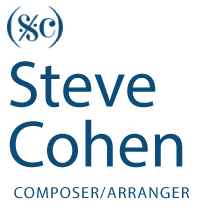5 February 2012
Last night, Saturday, February 4, 2012, a Quintet for Alto Saxophone and Strings I wrote in 1978 received its world premiere performance at Rutgers University in New Brunswick, NJ. You might be curious to know why this piece had to wait 34 years to be heard.
In 1978, I had been out of college for 2 years. I had a Bachelors degree from Manhattan School of Music (MSM), but I wasn’t keen on going for a Masters degree. I wanted to work and learn in the “real world.” Still, I felt it would be useful to continue taking composition lessons, not only for the knowledge I’d gain, but also for the spur of weekly deadlines the lesson appointments would afford. I studied privately with Giampaolo Bracali (z”l), who had joined the MSM composition faculty in 1972, the same year I started as a freshman. I studied with Giampaolo from 1977 to 1980, and I think that it was during this time when I truly found my voice as a composer. The pieces I wrote during this time include the Sextet for Piano and Winds, the Suite for Flute and Harp, the Symphony in One Movement, which I dedicated to Giampaolo Bracali, and the Quintet for Alto Saxophone and Strings.
A friendship with saxophonist Paul Cohen (no relation), whom I met at MSM during my undergrad years, alerted me to the largely untapped possibilities of his instrument, and I was eager to write something for the saxophone. Sax plus string quartet seemed like a good idea. I devised a three-movement structure wherein each movement would explore one particular facet of the saxophone’s personality. Movement 1 would feature tense, angular lines, Movement 2 would be soulful and ariose, and Movement 3 would be playful and sardonic.
[I’ll mention in passing that a young composer’s work is often a catalog of his influences, and this piece was no exception. One could hear lots of Bartok and Shostakovich in Movement 1. Movement 2 was modeled after a Bach aria with a walking pizzicato bass line, and this owes a particular debt to the lovely “Cranes Duet” from Kurt Weill’s MAHAGONNY. Movement 3 owes much to the scherzo from Schubert’s Cello Quintet in C, and in the trio section I do a cheeky, but affectionate parody of a Mahler ländler.]
When the piece was finished, I learned a very tough lesson: it was going to be really difficult to get string players to commit to performing, or even reading my piece. Apart from new-music specialists, for whom my style would be too conservative to consider, I found that established string quartets had such busy schedules playing their standard repertoire, they had little time or interest in new music. After a few months of frustration I gave up on trying to get the Sax+Strings Quintet heard, and went on to other projects.
Ironically, my next chamber piece would be my first Saxophone Quartet (1980), and that was premiered instantly, almost before the ink was dry. While the string quartet has a huge, rich repertoire, going back to Haydn, sax quartets only went back maybe a scant century or less. You write a piece for saxophone, and sax players go berserk with excitement as soon as they hear of it. You write a piece for strings, and your piece gets put at the bottom of a pile of pieces to be read maybe sometime. (Except in some very rare instances…) Is it any wonder that I’ve written so much music for saxophones?
Last night’s premiere came about when Andrew Steinberg, an undergrad sax student at Rutgers University, asked his teacher, Paul Cohen, for advice on repertoire for his junior recital. Paul remembered the Quintet, got Andrew in touch with me, and I was able to locate the score and parts, all done in beautiful, archaic pen-and-ink.
It was very strange to hear this music I’d written so long ago. My style has changed a lot over the years, and my music has gotten simpler and more direct. Back then I felt compelled to make a compromise between the music I heard in my head and the more rigorously intellectual music all my classmates were writing. If I had a beautiful simple tune, I needed to add some “wrong notes,” complicate the rhythm, or add some fussy details to make it sound “modern.” I no longer feel the need to do that, but people still tell me how difficult and challenging my music is, both for the performer and the listener.
I cringed at some of the excesses of my younger self, especially in the string writing, but I was gratified to see that the piece really worked in performance. Here was a piece that was shunned for 34 years, and now college students in their late teens and early twenties were telling me what a cool piece it was. I doubt that whatever satisfaction I might have gotten from having the piece performed when it was new could compare to the sense of vindication I felt last night, when the piece was finally heard.
